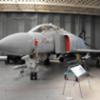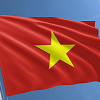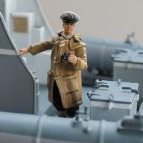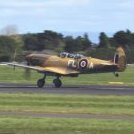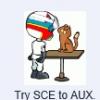Leaderboard
Popular Content
Showing content with the highest reputation on 13/07/21 in all areas
-
Ahoy there, Lads. There's probably a thing or two more i could do on it, but i'm calling the Buccaneer Done and Dusted. Let me start off with the executive summary, in classic "Navy Bird" Gillman fashion... Kit: Airfix Buccaneer S. Mk. 2C. Kit No. A06021. Markings: Serial No. XN977, 801 Squadron, HMS VICTORIOUS, 1965. Scale: 1/72nd. It's British! What other scale would it be? Aftermarket Products Used: Eduard BRASSIN Wheel and Brake set. MASTER turned metal pitot boom, Airfix Buccaneer S. Mk. 2B Air Brake Cones, CMK resin ejection seats, Eduard photo etched face curtain pull rings and canopy breakers. Paints: Mr Color, (Lacquer) Humbrol (Enamel), Tamiya (Acrylic AND Lacquer), Testor's Model Master Metalizers (Lacquer). All thinned into oblivion with Mr Leveling Thinner. Decals: Airfix (National Insignia and stencils) Modeldecal (Squadron markings), Xtradecal (where i screwed up the Buzz Numbers). Construction Details: This is the first 72nd scale jet I've completed since i rescued my Fujimi F-14A from the Shelf of Doom in 2008, and the first 72nd scale FAA subject i've finished since my Fujimi F-4K from 1988 (Those of you who have followed me over the years know that i've been struggling with a Corsair and Tomcat addiction. I'm still in therapy). Overall, very pleased with how this kit came out. I was familiar with the other Buccaneers extant before this release but was turned off by the amount of work they require to bring them to contemporary standards. This kit really presents the Buccaneer in a positive light, and it gives the type the respect it deserves. The kit is very intensively engineered, with a lot of parts in the box (explains the large box). Construction of the model largely mirrors that of the real aircraft, which is built up around 4 significant bulkheads. The forward fuselage splices to the centre section at the aft cockpit bulkhead, the aft fuselage mating roughly abeam the exhausts. Two substantial spars provide rigidity of the wings for building it with wings spread; a folded wing option is also offered. The air brakes can be depicted open (seen here) or closed. Weapons bay can be depicted open or closed (seen here). This model was intended first and foremost as a practice round to test and evaluate the Mr Color H333 Extra Dark Sea Grey and evaluate various kinds of Flat White primers and Gloss White finish coats. It was also an opportunity to finally use an old Modeldecal sheet which pre dated the Falklands campaign. Extra Dark Sea Grey is an elusive colour; depending on lighting conditions it can have a very bluish cast, or really none at all. Gloss White was used on many aircraft types as a protective measure against nuclear flash (over the shoulder bombing, you know), and i was skeptical about a gloss white being able to cover the bluish-grey Airfix plastic. Building up a sufficiently opaque coverage with flat white primer was aggravating because try as i might, there were always rough patches in hard to reach areas that required sanding down . I used mostly Mr Color Mr Base White 1000 as an undercoat, over which i applied Mr Color Gloss White. There were several sanding iterations with 3000 and 4000 grit, and at the very end i applied multiple coats of Mr Color Super Clear to lock everything down and prevent chipping. The Semigloss Extra Dark Sea Grey dried more to a flat finish. It took several coats of clear to give the model the degree of shine i wanted, and that caused its own set of problems; it behaved like a fingerprint magnet. Switching to Mr Color Clear Semigloss turned out to be a good move, though i had my doubts at the time. I depicted the aircraft with the speed brakes open. They add visual interest to the model, and they were opened up as a space-saving measure. Airfix does a commendable job at depicting this complicated assembly, but it did present challenges during its construction, and it forced me to paint certain parts and assemble others out of my normal "build it first, then paint it" sequence. The way the flat portion nests into the concave airbrake cones results in some out-of-scale joints, which would have required obliterating the raised kit details in order to apply some sort of photo etched brass overlay. I didn't want to make this build any more complicated than it needed to be. However, it all goes together and attaches onto the rear fuselage with no fuss. Curiously, Airfix included the later style air brake cones with the very pronounced "boilerplate" reinforcements in this kit. The later S. Mk. 2B Boxing incorporates the earlier style, "smooth" cones. So, i bought an S. Mk. 2B kit mainly for the cones, but also for the excellent stencils on the decal sheet. The end result looks pretty good. The Horizontal tailplane presented something of a construction challenge. I wanted to depict an early Buccaneer S. Mk. 2C which involved carving and sanding away a lot of the mods that were added to the plane over its lifespan. One of these required that the cone at the back of the stab assembly be reduced in with, with an attendant narrowing of the top of the vertical fin which the tailplane sits on. The Buccaneer had a variable-incidence stabilizer. The way Airfix designed the kit requires the modeler to attach the stab before painting can begin, which means it gets in the way of the build process and it requires a lot of tricky masking during the painting phase to get a clean, crisp result. You can't add it on at the end, like on say, an F-104 Starfighter. Creating an integrated tailplane that could rest on top of the fin and fit over it like a glove with a realistic scale thickness is probably beyond the limits of the state of the art right now, so i suspect Airfix had little choice but to go this way. The "Bullet" on the front end nests into a 90-degree corner and it took some work getting that to fit into place and get cleaned up. Airfix did a commendable job at re creating the distinctive "Trailing Link" design of the undercarriage; the outer fork on each strut combines an integrated brake stack that has a key to hold the tyre in perfect alignment to that the flat spot hits the ground in the right place. The downside to this though, is the struts are split into left and right halves, forcing the modeler to install the wheel into the strut before the halves are assembled and cleaned up. The end result is a rather involved assembly that can only be painted at the very end. I was worried about losing tread detail during the cleanup process, so I glued the strut halves together, sawed off the brake stacks, cleaned up all of the seams (mostly), painted the struts after the fact and installed Eduard Brassin tyres and brakes at the very end after painting them. The main wheels are anchored in place by axles made from small diameter brass rod. While its not obvious here, the intakes are very well rendered in this kit, featuring trunking from the intake lip back to the compressors molded into the number one bulkhead. Inlets are attached to either side of the forward fuselage, and the inlet lip extended to the inside with a well defined butt edge that the intake trunk abuts to. The end result is a realistic intake throat all the way to the engines, which if cleaned up and painted properly will pass the judges "penlight test". I only covered my intakes because late in the build it became obvious the the lateral seams on the intake trunks would be self evident if you looked in at just the right angle. So, i cheated..... HA!! *Intake covers on the Buccaneer, BTW are rather complex affairs and while i was able to eventually figure out an approximation of the front ones...i kind of gave up on depicting the ones in the back. The cockpit wound up being a combination of kit parts, kit decals for the panels and side consoles and resin aftermarket ejection seats with some Eduard Photo etch details added to the seats to disguise the fact that they're not....exactly....correct for an *early* Buccaneer. The seats themselves painted up beautifully. They sat a bit low in the cockpit, so i put some risers on the bottoms the raise their height to a more practical level.....perhaps too much? While i used the MASTER pitot boom, i avoided the IFR probe tip. Centering a pilot hole on the probe mast, given the relatively soft plastic just seemed too much of a risk. The kit probe painted up just fine, although i did incorporate a brass pin at the base to make a stronger attachment. Polystyrene is good for a lot of things, but re fuelling probes and antenna masts are not it. The kit pitot and TAT probes were used as patterns for making replacements using plastic strip and rod, since the kit parts were virtually impossible to clean up adequately to be made presentable. The scratch-built replacements look just fine once painted and given a wash to create some shadowing. I started this model last November, pretty much intended as a simple, "Slam Build", but this is not a simple matter like a MiG-15 or an F9F Panther. This is a big, substantial model, with a lot going on with it. In case you haven't seen it, all the build details, plus a sampling of my night club comedy material can be found here.... The Buccaneer is a complex and nuanced shape; Airfix has done a great job capturing the character of what is frankly a beast of a jet aeroplane. You can tell they brought their "A Game" to this one. I'd wager it's better than their 48th scale efforts. It's not what i would call a quick build; it's not hard, but it's not fast either. If a modeler is willing to put in the time, he/ she will be rewarded with an awesome replica of what is unquestionably Blackburns' proudest achievement in Naval aviation history. Now, apparently somebody has released a model of something called a "Phantom". In case anybody is looking for me, i'll be investigating this. As always, Keep your Knots Up and your Powder Dry. Fly Navy!!43 points
-
The Martinsyde G.100 Elephant was designed early in 1915 as a single seat machine for long range reconnaissance and bombing work. At that time, it was common for R.F.C. pilots to fly without observers to gain better performance for especially pressing missions, or to carry a greater weight of bombs, and the idea behind the Elephant was to regularize this practice by providing squadrons with a machine that combined good performance with easy handling in the air, and had excellent endurance and the ability to carry a good deal of weight. The G.100 Elephant was powered by the 120hp Beardmore motor, with its radiator behind the engine inside the fuselage, and provided with a large fuel tank giving it an endurance aloft of up to five hours, as well as attachment points for a camera on the starboard side of the cockpit, and strong points for bombs under the lower wings. Combat in the air was not general when the Elephant was conceived, but became so as it was being developed for production, and a Lewis gun was fitted to the upper wing to fire forward over the propellor, to enable the Elephant not only to defend itself, but to be employed on escort and offensive patrol duties. When the first handful of Elephants reached R.F.C. squadrons in France early in 1916, greatest priority was given to the fighting role, but the Elephant did not perform well in it. The Beardmore motor, and a relatively 'clean' design for the time, gave the Elephant a decent turn of speed, but it was nowhere near manouverable enough, and further hampered by the poor view forwards it offered the pilot. As the Somme offensive began, Elephants went on bombing duties, and a second Lewis gun was fitted to the port side of the cockpit to enable the pilot, with considerable contortion, to defend himself in some degree against attack from the rear. All Elephants with the R.F.C. in France were concentrated in a single squadron, No. 27, which became a specialist bombing formation, its machines carrying up to 360 lbs. of bombs. Casualties became very heavy once the German Albatros fighters appeared, and the appearance late in 1916 of an up-engined Elephant, the G.102, with a 160hp Beardmore motor, did not improve matters much. Nonetheless, No. 27 soldiered on with Elephants through the summer of 1917, after which they were replaced in France with DeHaviland Dh4 two-seat bombers. Elephants were sent to the Middle East as well from late 1916, forming the partial equipment of several R.F.C. squadrons based in Egypt and operating against the Turks in Palestine and Arabia. Elephants were also part of the equipment of No. 30 Squadron in Mesopotamia. In the Middle East, where aerial opposition was sparse and generally employed equipment contemporaneous with the design of the Martinsyde Elephant, the type gave a good account of itself as a general purpose machine, scouting and bombing and, on infrequent occasions, engaging Turkish or German aeroplanes. Pilots in the Middle East generally discarded the rearward Lewis gun, though it can be seen in a few photographs of Elephants operating in Egypt. Operations in the desert conditions were greatly hampered by the internal position of the Beardmore's radiator, which led to the water frequently boiling away before the machine had reached any significant altitude. The conclusion of the Great War did not end fighting for the R.A.F. in the Middle East, and a handful of Elephants were still engaged in Mesopotamia and northwest Persia during 1919. No. 7494, the subject of this model, was one of the first Elephants to arrive in the Near East, being shipped out from England in September of 1916. A G.100 with a 120hp Beardmore, it went to No. 30 Squadron in Mesopotamia, where it was employed in Gen. Maude's advance to Baghdad, and in campaigns later in 1917 north of that city. In March of 1918, No. 7494 went to No. 72 Squadron, a new unit which had arrived in Mesopotamia as personnel only, without any aircraft, and was equipped by a sort of 'whip around' among the squadrons already in the theater, in which it seems to have been mostly saddled with equipment those squadrons very much wanted off their hands. No. 72, even in such straits, does not seem to have wanted No. 7494 very much either, for when in April 1918 the squadron was ordered to provide aeroplanes to support the activities of 'Norperforce', No. 7494 was one of two Martinsyde Elephants the squadron provided. With its detachment to the independently operating North Persian Force, commanded by one Gen. Dunsterville, and generally known in consequence as 'Dunsterforce', No. 7494 (and its pilot, Lt. MacKay) became part of an extraordinary, and now largely forgotten, episode of the Great War, that took place in a situation of tremendous political and military complexity, blending Persian Constitutionalist rebels, Ossetian cossacks, Armenian and Azeri nationalists, Bolsheviks, Social Revolutionaries, and many, many more ingredients into the stew. As this was what moved me to choose No. 7494 as the subject for this modeling project, I hope you will bear with my attempt to sketch in at least the major elements of the situation, in which No. 7494 was to end its long service career.... Though Ottoman Turkey suffered great defeats at English hands in its southern dominions during 1917, the collapse of Russia and the seizure of power there by the Bolsheviks opened great prospects for the Ottoman Turks in the north. Enver Pasha mustered one last fresh army, dubbed the Army of Islam, from which German personnel were excluded, and dispatched it into the Caucasus, towards the great prize of Baku and its wealth of oil. This clashed directly with German ambitions in the region, and by the time the Treaty of Brest-Litovsk was signed with the Bolsheviks, Turkey and Germany were at daggers drawn in the region, with the Turks having much the upper hand as they advanced into largely islamic regions and the Germans shipped forces from the east to the Western Front. Major-General Dunsterville, a childhood friend of Rudyard Kipling, and the model for the cunning young Stalky of the pre-eminent school days tale 'Stalky and Company', was selected at the end of 1917 to be chief of a small military mission to Georgia. The intent was to bolster the resistance that Christian enclave in the Caucusus might offer to the advancing Turkish soldiers of Enver Pasha's 'Army of Islam'. Gen. Dunsterville arrived at Baghdad from India late in January, 1918. While the bulk of the troops and officers who would become 'Dunsterforce; (officially North Persian Force, or 'Norperforce') was assembled, Gen. Dunsterville departed Baghdad for Tiflis in Georgia with a small party, approximately eighty men in automobiles and trucks, with one armored car. Their route was over a grand road built with Russian money through northwestern Persia. An Anglo-Russian treaty before the Great War had given Russia extra-territorial rights in northwest Persia, and a large Russian garrison had been posted along the road, whose northern terminus was the Caspian port of Enzeli. The Russian garrison was particularly resented by the local populace, which had earlier given mass support to "Constitutionalist' rebels wishing both for modernizing Persia and defying foreign interference. These revolutionaries continued there under arms in large number, under the common rubric 'Jengalis'. At the time Gen. Dunsterville set out from Baghdad, the region was in a chaos, with the Russian garrison retiring in disorder to seek their homes, and Jegali partisans hurrying them along with gunfire. Reaching Enzeli on February 17, after adventures too numerous and arcane to recount here, Gen. Dunsterville found it in the hands of a Russian revolutionary committee hostile to any English presence, and rife with German and Austrian agents to boot. Gen. Dunsterville led his little party in a retirement south down the road to Hamada, where radio communication with Baghdad could be had. Here he maintained himself through the winter snows of the mountain region, while managing to secure some political support from the local populace, and establishing working relations with the one Russian unit still under discipline in the area, a regiment of Ossetian cossacks hostile to the Bolsheviks. When the snow began to clear from the roads, the main body of 'Dunsterforce' set out from Baghdad, reaching Hamadi and the general's advance party by the end of May, This constituted a battalion of English infantry, and included an aerial component of two Martinsyde Elephants from No. 72 squadron, and at least one R.E. 8. Over the winter, the aim of Gen. Dunstervilles northward trek ahd changed. Georgia had sought assistance from Germany, and could no longer be an object for English support. The intention now was that the North Persia Force of Gen. Dunsterville would be establishing a secure lodgement for England at the port of Baku, center of Russian oil production, one of the richest and longest established oil fields in the world. In company with the regiment of Ossetian cossacks remaining from the departed Russian garrison, Gen. Dunsterville began an advance in force north along the road to Enzeli. This met stiff opposition from the Jangalis, who were as hostile to any English presence as they were to the Russians. After several fights in which his small aerial component provided important assistance, Gen. Dunsterville reached Enzeli, and in such force that the revolutionary committee could not resist his control of the place. Indeed, he reports in his memoir that he hanged several of them out of hand. The situation at Baku was intricate and devious in the extreme. To the degree Baku was under the control of anyone, it was run by a Bolshevik committee ostensibly obedient to the current directive of Lenin that even the Turks were to be preferred to the English. The population of the place was largely Armenian, however, and in March of 1918 Armenian nationalists there had engaged in great massacre among its Azerbajani inhabitants. Many of the Bolsheviks were also Armenians, and knew perfectly well the consequences to themselves and their community of pressing Lenin's policy. Further, the sailors of the Caspian flotilla at Baku were Social Revolutionaries, a popular left body hostile to the Bolsheviks, and whether loyal to Lenin's directive or nationalists at heart, the Bolshevik committee wished this threat to themselves neutralized. With the Turkish 'Army of Islam' drawing near, and recruiting a goodly number of militia to its ranks from among local Azerbajanis as it did, the Bolshevik committee, which already had made some overtures towards Gen. Dunsterville, was deposed, and the new Armenian Nationalist government invited Gen. Dunsterville to sail into Baku from Enzeli. This he did, arriving on August 16, 1918, with a force comprising a little less than a thousand infantry, some armored cars and field guns, and two Elephants, including No. 7494 and its pilot, Lt. MacKay of 72 Squadron. What followed was a month long defense of the town against nearly twenty thousand Turkish troops, a mixture of Ottoman regulars and Azerbajani militia, by the soldiers of Dunsterforce, assisted by several thousand untrained Armenian militiamen. The Elephants brought important information on Turkish deployments on several occasions, assisting Gen. Dunsterville in parrying Turkish thrusts, but the outer defensive lines were pierced by the Turks before September; behind these there was little favorable ground for defense, and Turkish artillery was in range of the town. The Turks massed for their final offensive during a dust storm that kept the Elephants on the ground, though it would not have made much difference had they been able to observe the preparations. The attack came on September 14. Gen. Dusterville could only fight a rear-guard action against it, seeking to hold the Turkish advance off long enough to enable his men to retire to his ships in the harbor for evacuation after nightfall. His account of the action credits the Elephants and their two pilots, Lts. MacKay and Pope, with providing great assistance through strafings and bombings of Turkish troops at critical points. Flying low throughout the day, the aeroplanes were shot ragged, and No. 7494 and its fellow Elephant were burned that night to prevent their falling into Turkish hands. 'Dunsterforce' got off intact during the night, but the little R.A.F. contingent never recieved orders to pull back to the port, and instead piled into several trucks and drove off into the steppe, falling in with anti-Bolshevik Russians and only reaching saftety after considerable adventure. The Turkish commander held his regulars out of Baku for several days, giving the place over to massacre by his Azerbajani militia. Fighting between the English and Jangalis in northwestern Persia continued into 1920. This is a scratch-build in 1/72 scale completed some years ago, but I have since done some small touchings up on it, and taken new photographs in sunlight. The pictures put up on the old Aerodrome modeling forum are gone, as we had long since ceased using 'Boomspeed' to host pictures. The great challenge in doing this one was the need to make the whole nose hollow, to accommodate the visible motor, and the need as well to create the many perforations in the cowling. These were necessary for airflow through the internal radiator and in many photographs daylight shows through them. Doubtless the air through the open 'throat' of the cowling provided some cooling for the motor as well. The cabanes, too, go visibly through the cowling to the longerons. Complicating matters even further was the distinct upward slope in front the cockpit, which must change section from rather flat and angular to smoothy rounded as one proceeds forward. The whole piece in front of the cockpit is an eggshell, most of it made from quarter millimeter sheet, and in places sanded even further. I developed a sort of 'just enough to hold and no more' grip while working on the thing that still popped up now and then to make me drop something I should have been holding tight. The next most tricky part was the bare spars at the root of the lower wing, a fairly common feature on English reconnaissance machines throughout the Great War. I took some pains to distress the national markings, as photographs indicate that in the Middle East, the paints employed could not stand up to the sunlight for long.34 points
-
Afternoon all, Happy to present my latest offering, a kit I've owned for some time and bought at a bargain price of 21£ brand new from a discount store in Cornwall. I recently visited the Cornwall Aviation Heritage Museum at Newquay and was lucky enough to have been given permission to look around WR985, an Avro Shackleton MR.3 recently arrived in sections from Long Marston, where it had been decaying for years. The build itself was quite straight forward, with no major issues - the size of the fuselage meant the join seams between both sections along the top and bottom were a bit of a pain to fill. Also, despite filling the nose and engine area with significant amounts of weight, she was still a tail sitter. I managed to cram some more in the wings, which inevitably meant she was so heavy that the gear gave way. In the end, some blue tack and ball bearings at the front of the bomb bay solved this! Also, the canopy piece was partly fogged out the box, it took Revell several weeks to dispatch a replacement part, but in the meantime a friend donated his clear sprue to enable me to continue the build, so thanks for that. Although Revell included WR985 as a kit livery, I elected to model XF703 with this being an RAF St Mawgan based example. Photographed outside as the finished kit was just to big to capture nicely indoors. Next up maybe?32 points
-
Hi, this time I propose a classic, the 'Sturmbock' which belonged to the Ltn. W. Gerth, an ace with 26 confirmed claims, mostly four engines. As always, the construction includes a series of changes and additions, but nothing important. The aircraft, of the 11.(Sturm)/ JG 3, operated from Illesheim in July 1944. The camouflage, as always done exclusively by brush, was in the classic 74/75/76 (mixes of Humbrol Enamels). Finally an image of the lower surfaces. Hope you like. Thanks for viewing Criticisms and suggestions welcome. Giampiero Piva29 points
-
Latest off the bench is the Hasegawa FG1 Phantom in the markings of 111 Squadron, RAF Leuchers and the International Air Tattoo at Greenham Common 1983. Decals by Xtradecal and FOD covers by Quickboost. The kit is starting to show it's age and we really do need a state of the art one now....Airfix are you listening??? Please feel free to comment etc. Thanks for looking Dick15 points
-
Hiya Folks, I`ve been building this model over on the Bristol GB and it has been quite a challenge,...... with reprofiled cowlings, new wheels, propellers and engine fans plus the clear acorn DF loop from an Airfix Beaufort,.......but it is finished now and I`m so glad to have it in my collection,..... here is the WIP if anybody is interested, which also includes reference pics of the real aircraft; And here is the model, built as RH829, OB-M which was flown by 45 Sqn`s OC, Sqn. Ldr. Blythe who`s OC`s standard is emblazoned on the nose. This aircraft joined the unit on 13th January 1949, it belly landed at Tengah on 21st December 1950 but was repaired and served on until 15th February 1952.; And if you are still with me,.......and just to show what a huge chunk of an aeroplane the Brigand was,.... here it is compared with the aeroplane it replaced on 45 Sqn, the Beaufighter; Sorry if there are too many pics folks,.... All the best Cheers Tony14 points
-
Hi all, here some pics of the "new" Italeri MB-326 in 1:48 scale. In fact it is the almost 40 years old kit by Esci. Nevertheless a fine model with great panel lines but poor cockpit details. So I changed this to a Neomega resin cockpit, the rest including the fine deacls are OOB.14 points
-
Kineticmodel 's excellent F-104J is in the cabinet. I used Fundekals for markings. I really enjoyed this build. Full details of the build and more photos at my blog but here's some pic's for those not interested yn that13 points
-
It’s done. A few bits of PVA here and there to act as navigation light lenses need to dry before I do the official portraits. Thoughts? This is my first Valom kit to be actually built. I read other build threads, so felt warned sufficiently of the odd idiosyncrasy. In the end, it really wasn’t that bad. I’ve certainly battled harder kits, the Pavla Airspeed Oxford for example. The butt joints on the tailplane have proved to be quite robust, as have the wing joints. Making the fuselage seam disappear was a chore. My comments about the robustness of the undercarriage need to be taken with a pinch of salt, though. The moulded stub axles don’t quite fit the moulded dimples in the main wheels. Doing it again, I’d drill the wheels out a bit deeper to make a better joint. I found inadvertent or accidental sideways landings on the workbench could unstick the wheels, so they’ve now been reinforced with CA and a memo sent round to avoid dragging the thing sideways! As ever, my paint job could be better, but it’s no worse than previous models. I’d like to weather more to show a well-used airframe. I think some gentle oil streaking back from the engine cowlings and round the cooler intakes would look nice, but I need decent photo references to get that right. Quite a lot can be seen through the big cockpit greenhouse and nose, so I’m glad I spent a while detailing in there. Hindsight would see me handle the cupola transparencies differently. Sanding down the prominent frame lines would be high in the agenda, as they were constructed out of riveted Perspex sheets. Having left them unpainted they look like a mistake. Anyway, there she is, a big Bristol. Time to clear the bench and set up for photography.13 points
-
G'day Chums,may I present my take on the Hobbyboss 1/72nd F 84 E. The WIP thread is here . My thank to Stix and Enzo for doing their bit and to all who looked in and commented for the encouragement.13 points
-
Hi guys finished latest scratchbuilt railgun , Saint Chamond built eight of these very large calibre 400 mm howitzers fielded in the summer of 1916 they were very effective. The model is in 1 72 scale, 12 inches long hand painted in the usual French patterned camouflage figs are from W D models.11 points
-
I'm nearly at the end of this build after more than four years. It's on its feet and all the nav lights and landing gear doors are attached. I still need to add the antenna wire and the pulley block that guides it through the bubble canopy...well that and some paint touch-ups here and there. If anyone cares to see in-progress photos the link is at the end. The weathering was done with water-soluble graphite pencils that I found in an art supply store in town. The beauty of it is that it can be wiped off with a damp cloth if you are not happy with the results. With a sharp point you can wet it and follow the panel lines. It will lay down a fine line of sludge which you can then wipe in the direction of the airflow. It can also outline access hatches and panels. The thing to remember, which I learned the hard way, was that it darkens considerably when hit with a clear coat. The exhaust stains were another learning experience. I had never applied exhaust stains with an airbrush before, and the first attempt was with extremely thinned black paint and it was far too dark, and black. I managed to remove it all without too much trauma. The second attempt was with my own mix of dark grey and red-brown thinned to almost water. I learned that the perfect amount of stain was about two or three passes BEFORE you think it looks good. 🙂 Oddly enough in some light it looks thin and grey, in other lighting it looks very dark. I'm not touching it again! Sorry about the weird backgrounds, I was experimenting with lighting and background colours with my DSLR camera. Hopefully I'll do better when it's done.11 points
-
Well, despite my best intentions I haven’t finished this model today. Perhaps I might have tomorrow off as well. With the undercarriage attached, I spent a while painting it, and repairing some paint damage elsewhere. The silvered transfers were given some pricking and varnish treatment. They’re still not clever, but I have a plan that involves some careful weathering. The next thing was installing the engines. Yeah, well, that’s been vexing me for some time. The kit nacelles had a moulded square peg. At some stage, obviously, it had been intended to have an engine that fitted onto the plug. Somewhere, that good intention had been lost. So, the question was how do you attach a resin Pegasus in the right spot on the front of an oval nacelle, while simultaneously juggling the cowling and the exhaust ring? The instructions expect you to assemble the engine, cowling and exhaust ring into one unit. This is all well and good, but it isn’t immediately obvious how to then attach it to the nacelle. To cut a long story short, I decided on the following course of action. Dropping the cowling ring over the nacelle, I then held it in place with one hand, making it as square and central as possible. Applying a drop of CA gel to the nacelle front, I then dropped the engine moulding centrally within the cowling. It was aligned by eyeballing it, as the gel takes a little while to "grab" giving me some wiggle room. There’s every chance neither engine will be exactly aligned with the other, but I will have to live with that. Once the CA gel has set, I shall figure out how to fix the cowling, and then glue the exhaust ring in front. From above, you can see the cowlings are still loose. I hope there will be sufficient contact with the engine cylinder heads to glue the things in place. I then turned my attention to the exhaust rings. I had previously glued the exhausts in place, so the rings were stuck to some blutack, and then given some paint. It’s a concoction of Humbrol metallic enamels, namely polished steel and copper with a dash of matt black. This, I believe, constitutes all that remains to be attached to my Bombay. The donor DF loop and pitot have been given a wire peg to ensure some chance of remaining attached to the model. The wireless masts are currently just plain brass rod, but will be painted when glued in place. Slowly getting there, mostly waiting for paint to dry!11 points
-
Bristol Type 130 Bombay MkI, RAF No 271 Squadron, May 1940 Valom 1/72nd scale kit No 217 Squadron was reformed in May 1940, formerly being No 1680 Flight at RAF Doncaster. The squadron was a transport unit, and comprised a motley collection of impressed civilian airliners and near-obsolete operational machines. The squadron's earliest task was supporting RAF operational squadrons in France, and L5813 BJ-P was performing just that role when it stalled on approach to Bétheniville airfield and crashed in a field. You can read the crash report and find out more on this link. This model is the first transport type to be built for my collection. Eventually, L5813 will be accompanied by a Handley Page Sparrow and a De Havilland DH91 Albatross, as representatives of the transport types used by No 271 Squadron during 1940. The full story of the Bombay can be read on the Wikipedia page. I had been looking forward to building this kit for some time, and the Bristol Aircraft Company GB proved the ideal excuse. Having seen other builds, I was expecting some problems. The build, however, was fairly pain free. As a short-run kit, the Bombay is not at all bad. Most of the parts fit well, there's enough added detail in the form of PE and resin to keep most folk happy, and the parts count is quite low for such a large model. I made several choices for my build. Various parts were provided as PE, which would be very vulnerable to damage. I decided to make replacements or source from my spares collection. I decided not to "waste" the PE for the wireless equipment, since it wasn't visible in the finished model. The Vickers GO gun "barrels" - short stubs of plastic that were impossible to remove from the runner tree cleanly - were substituted by parts from my spares box. While I wanted to build the 1940 option of L5813 that came in the box, I wasn't happy with the quality of the transfers provided. The colours seemed a little bright, and they were printed off register a little. This prompted me to finally acquire a Silhouette Cameo cutter and to produce my own paint stencils for the national markings. This led me into a small rabbit hole trying to work out exactly what Bombays of the period and of that squadron really looked like. Most reference photos are of Bombays in North Africa and the Middle East later in 1940, and not one image could I find of the first half of 1940. Eventually, by a process of logical deduction (a rare thing for me) I settled on the markings scheme you see in the photos above. If nothing else, it's a lot more accurate than the Valom transfers and colour scheme in the instructions. Main paint is Humbrol and Revell acrylics, brush painted, with various enamel colours airbrushed for the markings. The WIP thread can be found here:9 points
-
Ah. Good morning all. And hoping that July finds you well. In my absence I notice that some spheres were kicked around some green rectangles for the last month and that the sea also caught fire at one point, so the news these days is basically all about the laws of physics. Shocked I tell you to see that a couple of months have elapsed since last fingering a qwerty on here - I missed you all terribly but needs must in the life/work balance sometimes. Work-work has thankfully slowed for the summer at last and with enough drainage and paths now laid in the garden to see us into the next decade we can enjoy the actual and metaphorical fruits of these labours for a bit: Falling asleep reading in the garden is one of those pleasures you only seem to truly appreciate in your fifth decade isn't it? Anyway, my mind has begun to return the the needs of the many XJ481 again. Despite the interregnum, I'd still been making patient progress with an unwanted problem that emerged with the original canopy vacforms back in late April - these if you recall were done with PETg over 3d printed resin bucks - as a consequence this next bit I'll discuss in enough detail just to help anyone else experiencing a similar problem with using photopolymer resin for such purposes. The initial vacform test that I published the visual results of on here looked optically fine to begin with but over a period of days became what is best described as 'hazy' in a few places, so I did a second test and disconcerted to see that on immediately releasing the buck from the PETg, that this material also was similarly hazed. Not severely, but enough to compromise the optical quality of the part. Much headscratching and reading about vacform problems eventually led me to narrow the problem down to one of chemical outgassing from the UV resin. Baking the bucks in the oven for a couple of hours at about 50-60°C to release said vapours was insufficient to cure the problem - I should add that also it was clear (or rather, not...🤪) that this problem was centered on the material from which the bucks were made, and not the result of atmospheric conditions as a) the PETg had been similarly baked in the oven to mitigate any hygroscopic effects, and b) (the clincher) only the areas where PETg and buck twere in physical contact was any hazing visible - the surrounding areas of transparency remaining unclouded. An additional caveat is that I've only isolated this problem as a function of using Elegoo's standard and ABS-like printing resins for vacforming purposes - I leave it to others to explore if the likes of Siraya &etc. use formulae different enough to avoid such issues. In playing around with different materials (which to be honest is a constant source of fun for me at the best of times), this was never going to be an unsolvable problem, simply one requiring some lateral thinking (or more accurately, in H2G2 terms to sidle up on the problem when it wasn't looking...😁). To all of you more expert in vacforming than myself it was also obvious that the undercuts present on the original forms created an unnecessary PITA when it came to releasing the bucks anyway, so a perfect opportunity to redesign matters of production. Using the original canopy design in Fusion, I turned this from a positive shape into negative moulds for casting purposes: You can see also that I included part of the surrounding fuselage to create a defined boundary in order to a) create a shape with no undercuts that slips easily free of the vacform, and b) to provide an unambiguous edge to trim around later when cutting the canopy shape out of the surrounding vacform plate. As I needed to create bucks that were hard-wearing enough to stand up to repeated use (rather than a one-off for a single model), I played around wit various combinations for hardness, such as adding Portland cement to P of P, before deciding feckit and trying cold casting for the first time using aluminium. The results were, I have to say, rather pleasing in terms of material strength and sharpness/detail: Although a bit dull when first cast, some earnest attention with the Wet & Dry & Water and you rapidly get a pleasing metallic sheen: I simply used Vaseline as a release agent for the moulds in this instance but should perhaps have used Brylcreem for that authentic period aroma... The results: The (gold) standard I was aiming for in terms of sharpness and optical clarity was the Falcon Clearvax stuff which for me, is incomparable in quality terms. They're not going to be worried about their customer base any time soon but I think I go close enough to their standard to be satisfied with using this in my own work: (This is the one for XJ481 btw in case you're wondering about the absence of the 'widow's peak' rain shedding detailing at top of the windshield). This was also dipped in Alcalad Aqua Gloss, which has replaced Klear now in my toolset when it comes to gloss effects. The amount of dust you can see in the above close-up (which stuff like PETg attracts via static electricity like nobody's business during vacforming and varnish drying) has also finally convinced me of the need to create some kind of minor 'clean room' area in the studio for jobs such as painting and varnishing &etc., so I recently managed to pick up a refurbished one of these at a reasonable discount: There's an air vent already in the end wall to act as an outlet so a bit of 5" flexible pipe knocking up a movable filter box that can be clipped to the professional quality paint booth* or positioned on the bench for sanding resin should help to eliminate this dust issue. Another issue off the checklist was the paint masking for the canopy. I'd like to pretend that this was the result of an elegant and considered software design process but as the only pattern making application I can see related to Fusion is obscenely priced for non-corporate users, it was indeed the old manual method of marking out framing on the canopy itself with tape and then cutting the masks to fit by hand: These were then scanned into Illustrator as a guide to drawing the required shapes, before being sent across to the Silhouette as an .svg design and cut to Oramask: If memory serves the inner set here are simply a reversed 10% smaller version of the exterior ones - clearly labelled here to avoid idiots like me to subsequently sticking them on in the wrong order.... Next task then is to actually mask up '481's canopy and sorting out some paints. Reading Nick Millman as we speak.... She's amazing: Tony *an old Ikea storage box on its side.9 points
-
The latest droid to add to my ever growing collection, this is an EG-6 Power Droid, or 'Gonk'. They're a fairly common sight throughout the films and TV shows, although PT-1N here isn't based on any particular one. He's mainly constructed from 3D printed parts for the larger components, with some traditional kit bashing used for the details. It was a huge amount of fun to essentially design and manufacture my own kit, and I'll cetainly be doing more printed droid models in the future. The full build can be found here for anyone interested. Finally, here's a few comparison shots with my previous Gonk, DN-LD, who was built from a JPG resin kit, and one last shot with R-33K who was loitering around the photo booth. Thankd for looking Andy8 points
-
After much internal debate I've decided to go with building a classic French jet that was used by the Armée de l'Air (AdlA), from the fifties through to the seventies. The sixties coincided with the French yé-yé musical movement which I'm a big fan of so each instalment of this thread will include some music from that era... For the kit I'm using the excellent Special Hobby kit in its initial Azur/FRROM boxing, the only difference between the early and late version of this kit is the decals, early = NMF, late = camouflage although it should be noted that NMF jets were still present very late into the aircraft's service. Here's the kit: Here's the main reference (although I have got some other magazine articles), the EM37 book is excellent covering the career of the type in French, Israeli and Honduran service, there are lots of photos, a technical section, unit histories, aircraft histories and where possible, a photo of every aircraft built with only a few exceptions. The text is French but a good on line translator will help. The book is quite expensive and the ordering process isn't simple but if you really want a comprehensive one-stop shop on the type (which I did), then this is the book for you. I've also got some Berna Decal and Modeldecal sheets on the type but the truth of the matter is, I haven't decided on the unit markings yet. The kit decals are quite good but I might use them with some of the aftermarket ones to mix things up a bit.8 points
-
Going to the stash, pulling out a kit and examining all the sprues/ decals / etc despite no intention of building it either now or the immediate future. Overlooking something in the stash because the decals look like a pain. Overlooking something in the stash only because of no idea what colour to paint it. Overlooking something in the stash because that kit's manufacturer makes things that are a pain to build. Overlooking something in the stash as it'll clearly take 5X the work of what you have just selected instead. Overlooking what is/are clearly the best kit(s) in the stash for no actual good reason and building something else instead. Building something you've recently bought whilst older kits that live in the stash, stay in the stash. Your stash has certain storage areas and once a kit goes into those, it'll never emerge. Buying more than one of the exact same kit. Being entirely bored of "Semi Gloss Black". Wishing Belkits would hurry up or at least give some idea of release dates. Wondering why Tamiya make car kits less frequently than they used to. Wondering why Tamiya stopped making rally car kits. Browsing 1999.co.jp excessively, especially the future months release section. Looking on ebay most days because it's lockdown and what else can you do? Wondering what it'll take to convert road car kit X to a race car, or race car kit Y to a road car.8 points
-
Here are some pictures of the just finished swiss Mustang.It is the ICM 1/48 scale model with the landing gear,horizontal stabilizers and propeller of a Revell P-51D built as the only P-51B flown in Switzerland.On the 19th of July 1944 this aircraft of 335th squadron,4th FG based at Debden made a forced landing in Switzerland after being damaged in a air combat with a Messerschmitt Bf 109 over Austria.The aircraft was brought to Dübendorf for testing were all armament was removed and than to Emmen where the landing light in the left wing was replaced by a measurement probe.After the war the aircraft was rebuilt to original condition and given back to the US airforce.All markings are painted using a Montex mask set. Saluti Giampiero8 points
-
This is the venerable Hasegawa F-111 which has been boxed in virtually every version of the F-111 made. In this case it is the EF-111A Electronic Counter Measures (ECM) version. Every boxing I have seen of this kit shows it with the wings swept forward and the flaps fully extended, Such as with my FB-111A that I built of a few years ago but what I have never seen advertised is that Hasegawa engineered this kit to also display it, with only minor surgery, with the wings fully swept back and and the flaps fully retracted. So I decided to show what the process is to pull it off. Also I needed to do it to save display shelf space First on the upper and lower fuselage there are 2 thinned areas of plastic that need to be removed. Here on the upper fuselage: and here on the lower: and here they are removed Once you glue them together the opening will look like this Next is the somewhat more complex work on the wings. The front slats have several little tabs that fir into notches on the lower wings These need to be extended to the top of the wing once this is done the slats will more or less neatly fit into the wing leading edge For the flaps the whole extensions of them need to be removes Being careful to leave the small stubs that fir into the wing trailing edge Again once done they will fit into the wings Finally there is a tab in the upper fuselage half, hard to see here that a slot on the upper wing fits into. Slot A is for the fully forward wing and slot B in for the fully swept wing. Note projection C, broken here, will engage with a pin in the upper fuselage in the fully forward position to give it extra strength. We don't need this in the swept position. So once all this is done we get this; And this is how it looks fully assembled So now that that is over we can finish the build. I used the Eduard interior and the Caracal 72101 decal sheet. I chose the "Mistress of Deception" marking because it is such a great name. I have to note that this is the first time I have had issues with Caracal decals. These had a very thin film, which is good, but it was so thin that they were had to position without them wanting to roll up into a ball. Anyway. Here it is Here are my 3 F-111 builds together. From left to right these are F-111E, FB-111A nd EF-111A Next up will be the Sword TAV-8A. Enjoy8 points
-
Supplied in the kit box - a square of mud-flap rubber and a template to cut them from. Nice! Also comes with a suggestion to use "metal glue", which I've taken as superglue. By crudely mixing two shades of the weathering pigment with Testor's Dullcoat, I can get something fairly opaque, gritty and guaranteed matt. And then apply it around/near the wheel arches and the newly installed mudflaps. Completed underside. Rear wheels on. Rear lights on. The left one wasn't straight when I took the photo but the glue wasn't dry either, so corrected it later. At this point all that's left are a few pieces on the bodywork and some decals around the back and front number plate, so this'll be the last WIP image. See you in the RFI section.8 points
-
G'day all. It's been a while since a completion. It just so happens I reduced the stash by one this afternoon. This is the lovely 1/72 Airfix S2C Buccaneer. It's a great kit to build with only two real gripes. I found that the inserts for the exhausts at the rear fuselage required some material removal as did a small amount at the nose to fuselage join. Other than that she's in the display cabinet safely. Kit decals used as XV336 while with 800 NAS on HMS Eagle in June 1971. I opted for the folded wings and deployed airbrake not so much as a space saver, but because I think its an airframe that doesn't look too bad like this. Keen to hear you thoughts. Cheers, Mick8 points
-
Well here it is, my 1/72 Mirage III. Even the easy builds can catch you out sometimes, but overall a chilled build and paint. And most importantly, from my point of view, the undercarriage stayed upright 😀 Thanks for the GB, I've enjoyed it.8 points
-
8 points
-
I heard that there would be a six-aircraft military flypast over Merville Barracks Colchester to mark the Presentation of Colours to the 1st, 2nd and 3rd Battalions of The Parachute Regiment by the Colonel In Chief, HRH The Prince of Wales. My imagination ran away with all the possibilities, so I jumped in the car and made the trip to Colchester, hoping for the BBMF Dakota, Hercules, A400M, Chinook, Puma and maybe even a C-17.... The event centred on the parade square in Merville barracks, where I understand there were three guards drawn from the three battalions and the old Colours were marched off for the last time. The Consecration Service followed and the new Colours were presented to the three Battalions. Activity on the Parade Square was followed by the flypast and a free-fall display by the Red Devils. I was somewhat disappointed with some of the six participants of the flypast!! That will teach me to let my imagination run away with me! Thanks for looking.7 points
-
Here are some pictures of my HpH Models Messerschmitt ME 410 in 1/32nd scale. It is a multi-media mainly resin kit, it is not Tamiya and I didn't expect it to be. From a cottage industry limited run kit a little trimming, sanding, head-scratching is to be expected but I loved every minute of building. The kit is on the expensive side but looking at the end result it is worth every penny! The surface detail is superb! Thanks for checking in! Peter7 points
-
Hallo all! My name is Luca and i'm new here. here some pics of my new built and first post here, the Airfix Hunter F.6 in 1:48 converted to a Mk58. I've add some Eduard PE`s, pitot by Master, flaps by A.M.U.R. Reaver and decals by McOne "Late Swiss Hunter". Hope you enjoy! Cheers from Switzerland. Luca7 points
-
Good morning, my friends. Some time devoted to modelling since sunday so some progress too. The dorsal seam cracked again so more than a "final" tidying up before paint was needed. Most of the surface received a coat of flat black primer (over the grey) prior to spraying silver (Vallejo Metal Color). Areas like the junction of the clear part with the fuselage and the carburetor intakes were revisited, as were different seams and panel lines on the belly. I didn't want a too shiny look but with a flat black base, the color is maybe not "reflective" enough. I spray two or three very light misty coats before a wet coat. One more light wet coat should help. I'm really happy with the result (as usual with these paints). Have an excellent day. Bye. Pat.7 points
-
After a less than successful first attempt at adding the Hertz stripes I'm now back to bare black again. The stripes were removed with masking tape and they came off easily enough. The whole car got flatted of yet again with 2000 w+d paper, used wet, and re painted with two coats of Tamiya gloss black. The paint has gone on well and although it has very slightly dulled as it dried, the gloss is still pretty good. I'll let it harden in the sun today and tomorrow see if I think a coat or two of clear is a good idea or not.7 points
-
Hi guys !! This is the Trumpeter 1/35 Mid Tiger I. Vehicle is based on the 2/502 vehicles, fighting at the Narva Bridgehead in early ‘44. Thanks to @DByrden for confirming the location as Vaivara Station. The vehicle is based on these photos, and I could not see any Zimmerit on these particular vehicles and photos, or the third photo shown in the build log. So, on to the build. Basically straight from the box, with just tow cables added, cold weather tarps from parchment paper, and a limited pallet of Vallejo and Windsor and Newton oils. Thanks for taking the time to look Lee.6 points
-
Finnair have a history of 35 years in operating various DC-9 to MD-80 variants. The company started to use the short DC-9-14's in 1971 and the last long fuselage MD-82's went out of service in 2006. The growth in the size of the DC-9/MD-80 sub types during those years has been massive. The length grew by 13 metres, the wing span by 6 metres and the passenger capacity by almost 70 seats. In all, Finnair have been a very McDonnell-Douglas oriented airline throughout the years. Their fleet has consisted of DC-3, DC-6, DC-8, DC-9, DC-10, MD-80 and MD-11 planes. The only Boeings have been one 737-200 and seven 757-200's. The Airbusses have started to take over the Finnair fleet from 1999 onwards. I built the 1/144 scale DC-9-14 from an Authentic airliners resin kit with 26Decals livery set. The MD-82 is a Minicraft kit with Draw Decals markings.The both kits were of very good quality and in my opinion the Minicraft MD-82 is one of their best kits. One of the most interesting details I scratch built to the MD-82 was the odd looking splash guard of the front landing gear wheel that prevents foreign articles from flying into the engines. History has it that people have sometimes called the air controllers very worried because they saw that that some rubbish had been stuck to the front wheel of the plane6 points
-
A village not far from me is called Ugly, the local Women’s Institute is therefore named, Ugly Women’s Institute.6 points
-
If you are going to use wing tanks, here's something you may want to consider: (The corrected FineMolds tank above still needs a little more curvature by further sanding down the pointy tip). I also cross-referenced the new Tamiya 1/48 F-4B tanks. Gene K6 points
-
Some time ago I decided to build Revell's VW 1500 in 1/24 scale. The nostalgic Beetle (the Finnish nickname is " the Bubble") is for me one of the most important cars I have experienced. It was the first car my dad owned, a light green 1959 Beetle in which we used to travel across Finland and the Nordic countries. At the age of eighteen I did my driving school and passed the driving exam in a Beetle. For many years thereafter I used to borrow the new Beetle of my dad. The Revell kit was of very good quality and easy to build. It contained a lot of details, the fit was excellent, the decals were good and all in all the kit was a pleasure to build. I chose to paint the bodywork of the car with Tamiya light blue spray, TS-23. In my opinion that colour suited the Beetle very well and looked quite authentic to my eyes. For the smaller details and the parts inside I used Humbrol enamels and Vallejo acrylics.6 points
-
Ah, 80% Stroh rum, now there's a blast from the past or when I used to be able to get hold of it, a blast from the Martian's assorted orifices! More like a Pangalactic Gurgleburp than Pangalactic Gargleblaster ! And airbrushes and anything else you might want dissolved/sanitised. I am given to understand that some people use it as a hand sanitiser these days. Actually, this reminds me of a party I attended with some French modellers on the Saturday night of Scale Modelworld once. One of the French chaps who was a farmer for a living, was handing round what purported to be a litre and a half bottle of "Martini". It transpired that it was not Martini at all but some illegally distilled Calvados that the guy had made on his farm. I quite liked the stuff, it gave a warm/ burning sensation on the way down and was very flavoursome but most of the attendees at the party found it way too strong and ended up donating their glasses to me. After a while, I thought I was beginning to feel a bit sick and decided I ought to repair to the gents. I say I thought I was feeling sick but it turned out to be the mother and father of all burps! This was the only time in my entire life that a drink burned on the way down and its vapour burned on the way back up! It was indeed fortunate that there was nobody with a naked flame nearby! Having established that I was not feeling sick after all, what did I do? You've guessed it, I went back upstairs for more of the same. To date, it has been the only time that Mrs Martian has had to undress me and help me into bed! (No, not in THAT way, you horrible lot in the cheap seats!) Martian 👽6 points
-
Hello everyone. Out with the old in with the new. I’ve now received my new copy of the Airfix Vulcan, with it comes the obligatory looking inside the old kit as to what’s tucked away inside. Having seen a good few complaints from BM ‘s who’ve been sold some very poor quality control new kits I felt obligated to check out the contents. I generally don’t like to open up a box for fear of depreciating it, but, in this case firstly I’ve checked to see everything is properly formed, and secondly I just needed to fondle some plastic. Having been following Adam’s post so far, I think I can add some stuff from my collection of modelling stash into the heading rivet counting. Firstly, a statement from myself about some of the photos that will follow. I’ve been following some photos/negatives on an auction site for a little while but I’ve not had cause to use them for modelling purposes. As we all should know something about copyright here’s what I would like to say. I’ve bought a negative of Vulcan XM594, and it’s been used already in a digital form by Adam. I think the original photographer could/ possibly still hold the copyright for it. But, as the negative has been sold this does not mean that the negative has been ‘sold on’ several times. This may mean that the photographer may not be concerned about copyright. As the owner of the negative the law is very difficult to interpret. For me the less said the better……If I’ve got anything wrong please could you let me know. ( the very-very simplified version). Adam has beaten me to the punch. I was keeping my power dry and waiting for my kit of the new Vulcan to arrive before using the photos, but hey-hoe. Maybe next time I have a usable photo for something else I should get in there first. Following on from what Adam is doing, I’ve not seen much in the way of people posting stuff about what they may have stashed away. So, I’m going to post some pictures of old and new products, some may just be a trip down memory lane and some I’m hoping to be able to use on my build. All with a view to getting the details correct. This is Vulcan B2 XM594 Scampton Wing photographed BoscomDown 1967. It’s a lovely 18x20 inch photo, a little pricey but it’s nice to be able to pick out the details. Some of the salient points that Adam has bought to this post I’ve highlighted, I’ve run out of arrows! The one point that I would like to add from my observation of this photo is that the paint finish is a soft edge, the green arrow on the fin shows this. Also I’ll have to look harder to find if it’s got red anti-col lights (1967 on-wards). Some of the goodies will be of very little use in a modern build will be P.P. Aeroparts crew ladder. I wasn’t that interested in doing a Vulcan with a Blue Steel weapon but at bottom left of this picture is the utterly ridiculously amazing 3D printed Blue Steel trolley, it was for use on the Airfix Victor. Some of the older Model Decal sets contain a veritable array of useful details. Even the IPMS mag has in the past been a source of detail - top right. And at the bottom who could forget or be without that copy of The Worlds Greatest Mag…… Some amazing publications here. Finally, how to solve that rivet counting problem, my wind shield wipers are just wrong. Take an old canopy and a now not applicable detail set…… That’s all for now. Stay safe. 😉6 points
-
Ah, the joys of being my own boss. Being so close to the finish line with this build I let myself have today working on it. The first task was resorting to the kit transfers for the serial numbers, W/T markings and those lovely boot print markings. The transfers were very thin, and generally floated on well. As I elected not to gloss coat the entire model, I floated the stickers onto a bed of Humbrol acrylic gloss clear in the hope it would eliminate most silvering. It did for about half the time. I will need to spend a bit of time punching through and flooding things with varnish later. After a quick coat of W&N Galeria matt varnish, it was time to tackle the undercarriage and remaining strut work. The main gear legs look horribly fragile, but once glue has set and liquid cement done its magic, the assembly is quite strong. I glued in my made-up metal tail wheel and fitted the tail struts - none of which met with any of the location holes. I think a little filler and paint retouching will be required. The undercarriage all needs painting properly anyway. So, aside from the vulnerable bits like pitot, aerial masts and machine gun barrels, what’s left? Something bleedin' obvious. Can you guess?6 points
-
Hi guys !! Todays start is the Tamiya Nashorn. It was a toss up between this one and the Dragon Hummel. Box art is pretty nice... Construction is pretty basic, starting with the lower hull. Main issue is all of the armor plate has these mold ejector marks, and will have to go !! Also, there is no radio detail, but I’m pretty sure I have some spares from a dragon kit. Interior shots... Lots of little thugs to add or replace. VVV See the radio on the far right. And a Porn shot, for fun. More to come !! Lee.5 points
-
Hi, starting a new ship, Trying to make HMS Kimberley from Flyhawks HMS Jupiter. The most significant difference that I can see is Kimberley retained both stes of torpedo tubes. I have filled the square opening for the 4" AA gun and have made a start with the amazing Sovereign hobbies Colourcoats Narn 23 dark deck grey and masked up ready for the 507c. I will be using the illustration from "The Kelly's" book by Christopher Langtree. I intend to try to make this one my best effort yet, time will tell. More to come Mick5 points
-
Hey Everyone, I had such a great time building this launch vehicle. I'm glad you all tagged along with this long and interrupted build. I want to thank everyone for the great comments and all the time you invested watching this thing grow. I'm off to new projects now, and new builds are coming soon. Thank All you guys for tagging along. Enjoy the photos, Rich And now, for the finished build. Thanks Everyone!5 points
-
Hi everyone i've just finish this helicopter. The kit was very fit and detail, Especially the interior (It's a pity that it was all covered up) Thanks for watching !5 points
-
I love the spelling mistake on that bottle. "Formally known a Klear". They probably meant "Formerly known as Klear", unless Klear is just its Sunday name?5 points
-
From Ciro Models - ref. 453 - MiG-21MF CRYSTAL CLEAR CANOPY + INNER FRAME Source: http://shop.ciromodels.com/1-48/98-c-453-mig-21mf-acetatovy-pekryt-s-ramem.html V.P.5 points
-
In the mean time I've assembled the anchor and fitted the sails : Arjan5 points
-
Making great progress, thanks David; the medics are really pleased with me and I feel better and better with every passing week. Stamina is the only remaining legacy (quiet in the cheap seats), but that will return. I still fall asleep after any prolonged concentration and/or effort. We’re away on holiday at the moment (Appledore; lovely), so no modelling at all. But Ark will not stay silent for long.5 points
-
decals mostly applied they are very thin and tend to wrap, happened so to one of the cowl "La-11" decals due to a heatwave, the paint is still a bit sticky and my dad thinks he won´t get the already applied decal completely off again without having to sand and repaint gonna wait for the hopefully soon to be lreleased Begemot La-9/-11 decals which include a red scheme, which also wears a fuselage number and looks more attractive DSC_0009 by grimreaper110, auf Flickr DSC_0010 by grimreaper110, auf Flickr5 points
-
So, as expected, next day delivery in NZ really meant next day shipping and it will arrive at some point in the future, but only 6 days before this arrived... Initially the lines were far too thick but a little thinner and a cotton bub cleaned it up quite nicely (in my humble opinion, having never done this before)5 points
-
Time for those decals! After a long modelling pause, everything is really difficult: assembly, painting and decaling 😬5 points
-
Sorry about the delay in updating the thread, had a couple of rough days and lost the mojo a bit but I am back in the saddle now. The wing section fitted to the fuselage quite well in the end with only a smear of PPP needed in a couple of places and the tailplanes were a pretty good fit too, and with that done I headed into the spraying area and put down the white needed for the tail markings and also the yellow theatre markings on the wings, fuselage and nose. when that was dry I masked off the white areas on the tail and sprayed the red and green areas. I had also given the wing and fuselage areas where the Hungarian markings will go a light coat of white to try and help the white in the decals stand out, I borrowed this idea from @Ray_W's excellent Bulgarian 109G6 build. When all the above was dry I masked it off and got a coat of Xtracryilcs RLM76 on the undersides, it didn't go particularly well for some reason but I persevered and am happier now with the results. Next came the RLM 74 and 75 on the upper surfaces for which I used Lifecolor paints and they worked very well indeed and I even had a go at mottling with them which whilst not perfect turned out pretty good for me, to be honest I was fairly safe as I am going to cover most of it with whitewash which is why the wing surfaces were done freehand and not masked. here are a couple of pictures of the uppers and one of the under surfaces so that you can see what she looks like at the minute starting with the undersides; And a couple of the upper surfaces; The upper nose section needs to have some RLM 70 sprayed on randomly, the instructions say to do it in 75 but other pictures of aircraft from the same unit at the same time clearly show a dark green which seems to match the propeller, so 70 it shall be. When that is done it will be on with a clear coat for the decals. Decals before the whitewash you say? Yes, I plan on doing it just like the real thing by putting the whitewash on roughly with a brush around the markings, what could possibly go wrong! Thanks for looking in and as usual all comments and criticisms are gratefully received. Craig.5 points
-
Thanks Chris! It’s confirmed I was right to make the Cameo purchase. A few little tweaks here and there and I’ll be churning the things out like nobody's business! I decided to go for the codes in the end. With no photo references I can find from the first half of 1940 I went with the usual layout of lettering on planes in the Middle East later in the year. My first go was foiled by the inner spaces not wanting to come unstuck. I ran a second copy through the cutter with a slightly heavier cut, and two passes of the blade. That was a lot better. Scrap film was used as extra masking. In fact, the various off cuts will linger round the bench for other masking duties, so it won't go to waste. I am very pleased with my first effort at stencilled markings. I think it’s very much going to feature in my modelling life from now on.5 points
This leaderboard is set to London/GMT+01:00



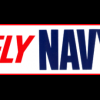

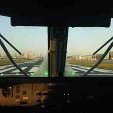
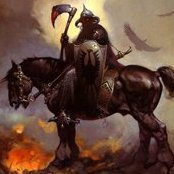


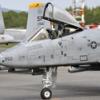
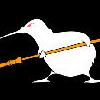
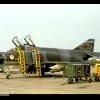

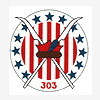


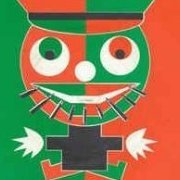
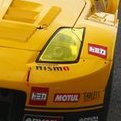
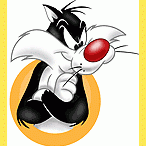
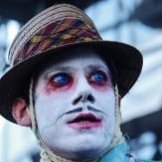
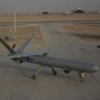

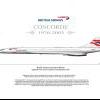
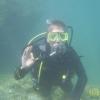
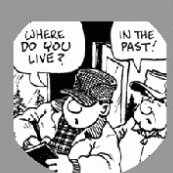

.thumb.jpg.d3635a7ef6507d35f372dd09671fe96f.jpg)
.thumb.jpg.d63052df9f30de247fb49bf44f442289.jpg)


